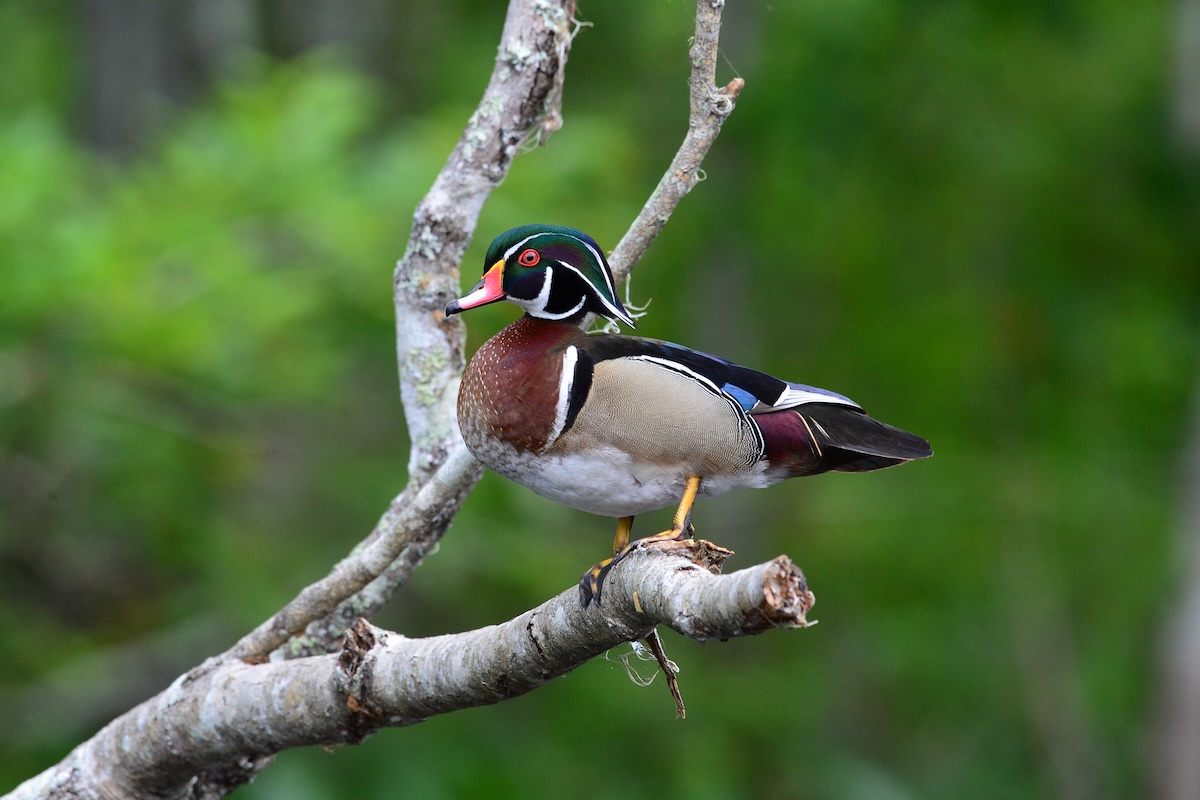If you’ve ever stood knee-deep in the tannin-stained waters of an Old Florida creek at daybreak, listening to the woods wake up with that eerie, hushed stillness before the first wingbeats break the silence—you know what this place asks of you. It’s quiet work. Patient work. The kind where knowing where to stand can mean more than how fast you can pull the trigger.
Florida’s Big Bend—especially its bottomland hardwood swamps and flooded timber along creeks and sloughs—is a different world for waterfowlers. Out here, you don’t have endless skies and dry cornfields like the Midwest boys. You’ve got low canopies, winding backwaters, and ducks that don’t always play by the usual rules.
Econfina Sporting Club sits right in the thick of it—hardwoods, sloughs, and backwater that hold birds when other places go quiet, and thus are home to some of the best hunting spots in Florida.
Mornings start slow here—black coffee, wet boots, the kind of quiet that settles in before the birds move. Whether you’re headed out with a guide or pushing your own canoe into the dark, it’s an authentic hunting lodge built for those who take duck hunting seriously.
This duck hunting guide is for the boots-in-the-mud crowd. The hunters who appreciate a clean call, a well-placed shot, and knowing exactly what dropped into the spread—whether it’s their hundredth morning in the swamp or their first.
So let’s get right into it—the game birds that make this corner of North Florida what it is, and what you need to know when they come cutting through the trees or skimming the marsh:
Know Your Birds: What Flies Where
Table of Contents
ToggleTimber Kings
These are your mainstay birds in the flooded hardwoods, creeks, and backwater sloughs—what most hunters are gunning for at first light deep in the swamp.
Wood Duck (Aix sponsa)
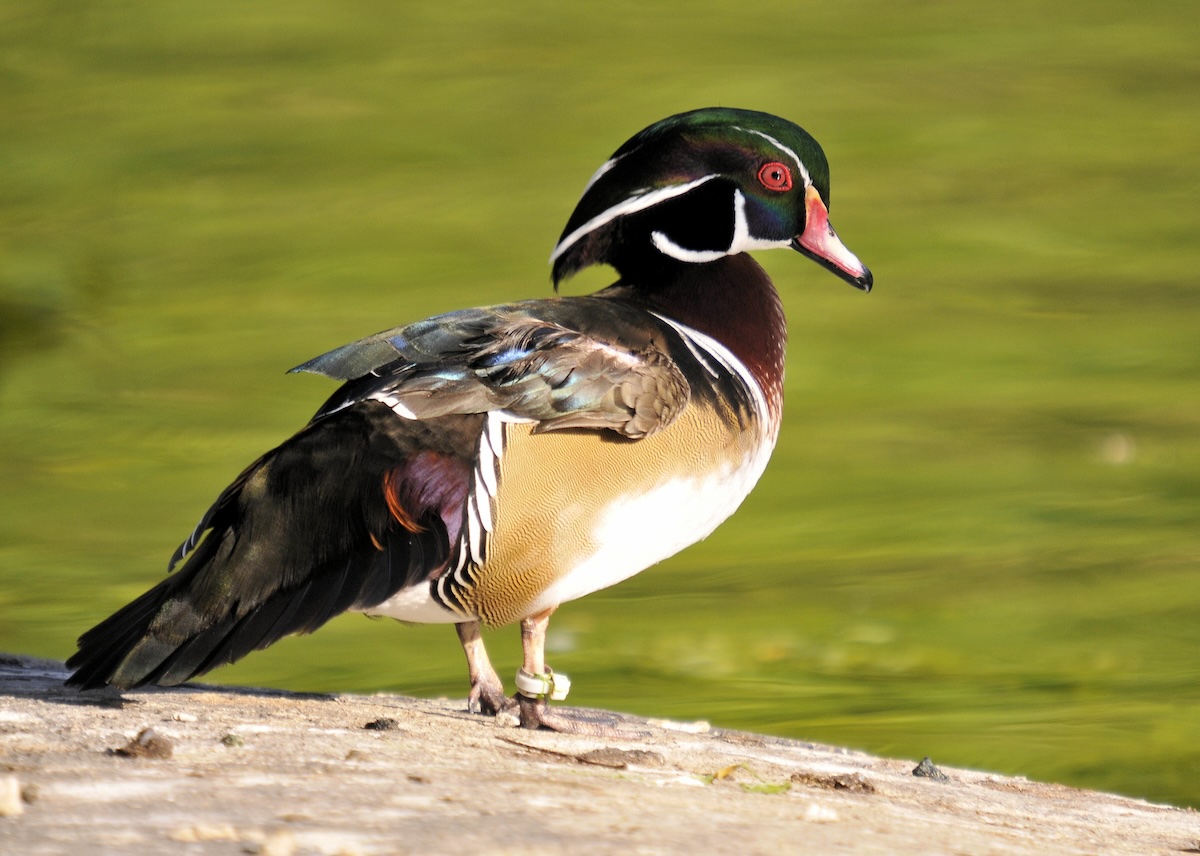
Where You’ll See Them:
The poster bird of Florida hardwoods. Look for them cruising creek bends, loafing in shaded sloughs, or bombing in tight through cypress breaks. Woodies love cover, and if you’re not hearing that high-pitched squeal echo off the timber before first light, you’re in the wrong spot.
Call Notes:
Forget hail calls and long cadences. A soft “ooo-eek, ooo-eek” works wonders. Keep it subtle—wood ducks don’t need much convincing if they already like the hole.
Plumage & ID Tips:
Drakes are showboats—glossy greens, purples, and that bright white throat slash. Hens are more understated but have that teardrop eye ring and sharp, almost whistling call.
Feeding Behavior:
Dabblers through and through. They’ll hit acorns, aquatic plants, and bugs. If you’ve got water over fresh oak drop, stay put.
Shooting Zone:
Tight quarters mean fast shooting. You’ll rarely get a clean crossing shot—think straight-on or banking turns. They dip and weave like fighter jets through the branches.
Mallard (Anas platyrhynchos)
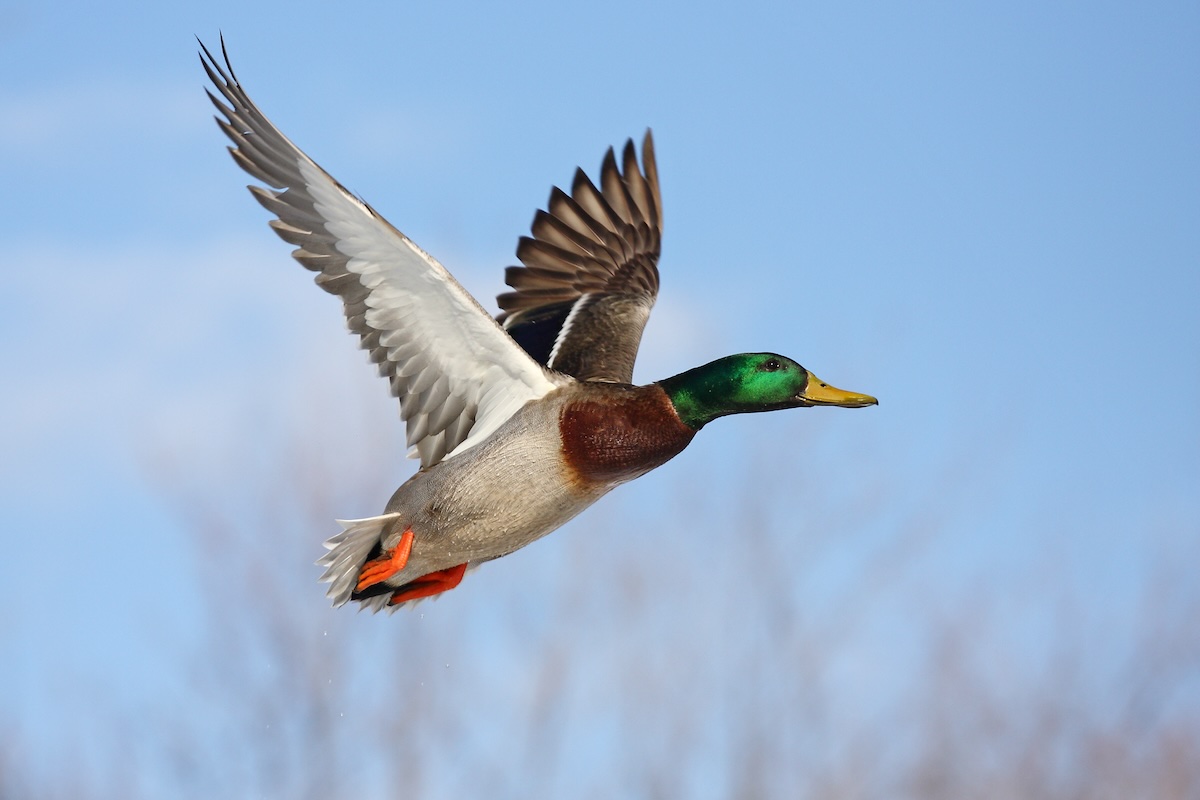
Where You’ll See Them:
Less common down here than up north, but the locals know where to find ‘em. Big sloughs with standing water and good mast crops will pull a few greenheads, especially after a cold front.
Call Notes:
Classic five-note hen mallard quack will do the trick if they’re around. Don’t overdo it. They’re wary this far south and won’t forgive bad calling.
Plumage & ID Tips:
Drakes sport that unmistakable emerald head and chestnut breast. Hens are mottled brown with an orange bill. Listen for that sharp quack—it carries through the timber like a hammer.
Feeding Behavior:
Same deal as woodies—acorns, grains, aquatic vegetation. Mallards are more prone to tipping up in open water but will hit flooded woods hard if the food’s there.
Shooting Zone:
Bigger and slower than wood ducks, but don’t let that fool you. They flare fast when something’s off. Pick your shot, stay low, and shoot ahead of the curl.
Mottled Duck (Anas fulvigula)
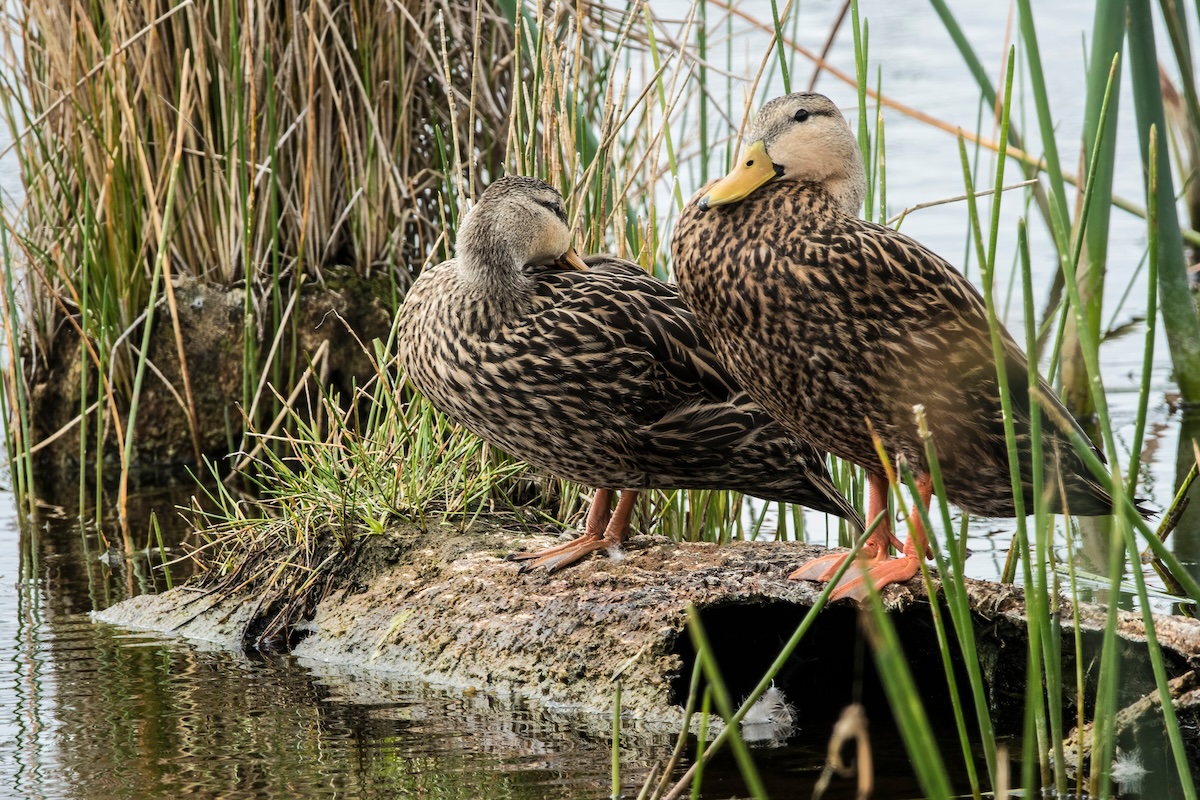
Where You’ll See Them:
Mostly in the marshes near the coast, but don’t be surprised if one slips inland during high water or post-storm floods. They don’t migrate, so local pressure makes them smart fast.
Call Notes:
Sounds almost like a mallard hen, but flatter and less drawn out. You can call them with the same cadence, just tone down the aggression.
Plumage & ID Tips:
Look like mallard hens at a glance, but with a darker overall tone and a solid black bill (on hens). No white wing bars either, which is a dead giveaway once they flare.
Feeding Behavior:
Marsh-rooted foragers. They’ll sift through the shallows, edge grasses, and mudflats.
Shooting Zone:
Decent flyers but don’t expect acrobatics. They’re more likely to slip in low and slow—easy to miss if you’re distracted or scanning too wide.
Teals
From early-season blue-wings to the late-pushing green-wings, these fast movers are your reflex-testers and food-source seekers.
Blue-Winged Teal (Spatula discors)
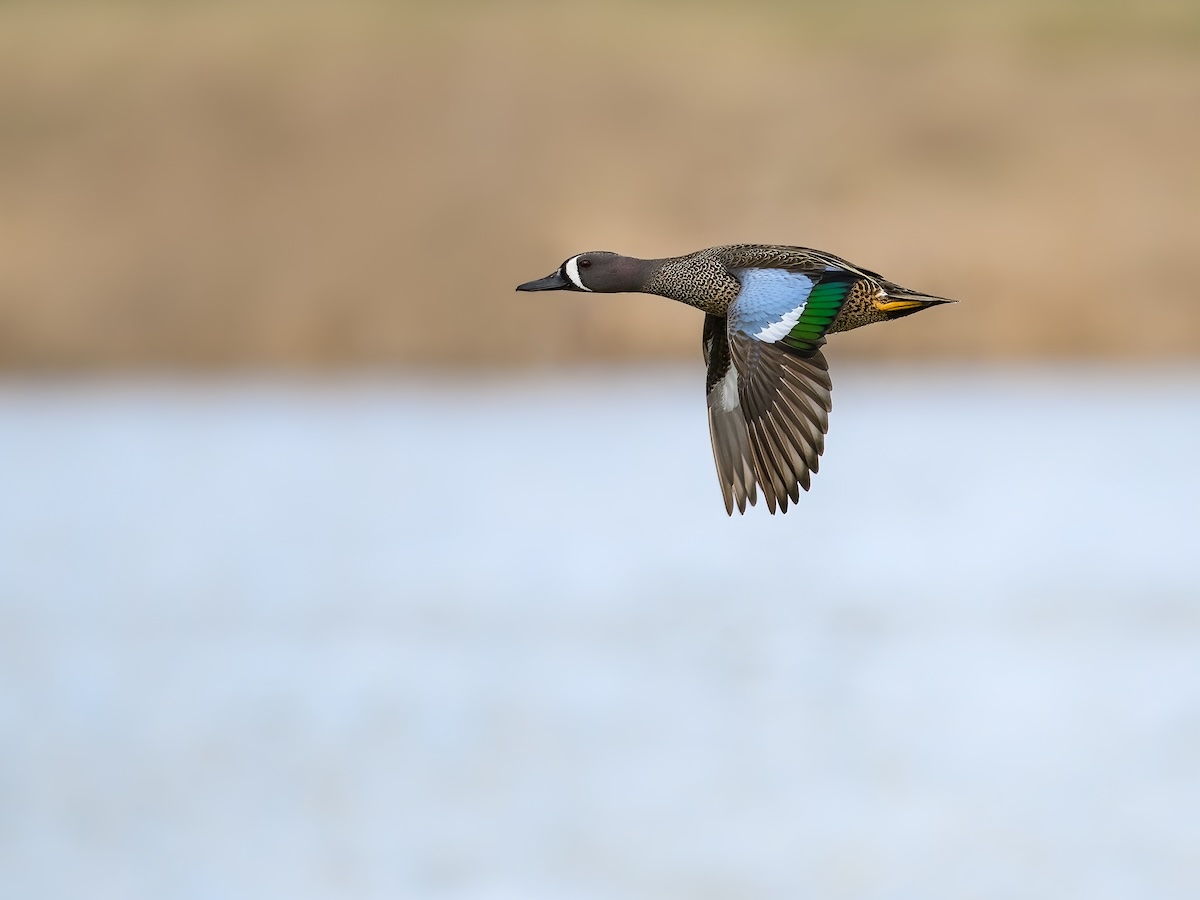
Where You’ll See Them:
Early season favorites. Teal love the open pockets in shallow marshes and flooded pasture edges, but they’ll buzz right over hardwoods too if you’ve got water and cover.
Call Notes:
A high, thin peeping call is about all you need. They don’t chatter like mallards, and overcalling can burn you fast.
Plumage & ID Tips:
Drakes have that powder blue wing patch and white facial crescent. Hens are brown and quick—don’t blink.
Feeding Behavior:
Tiny dabblers. They’ll hit small seeds, invertebrates, and aquatic weeds. Quick to feed, quick to leave.
Shooting Zone:
Blink and they’re gone. Teal are a warm-up for your reflexes—fast, erratic fliers that dart low and tight. Swing early and trust your lead.
Green-Winged Teal (Anas crecca)
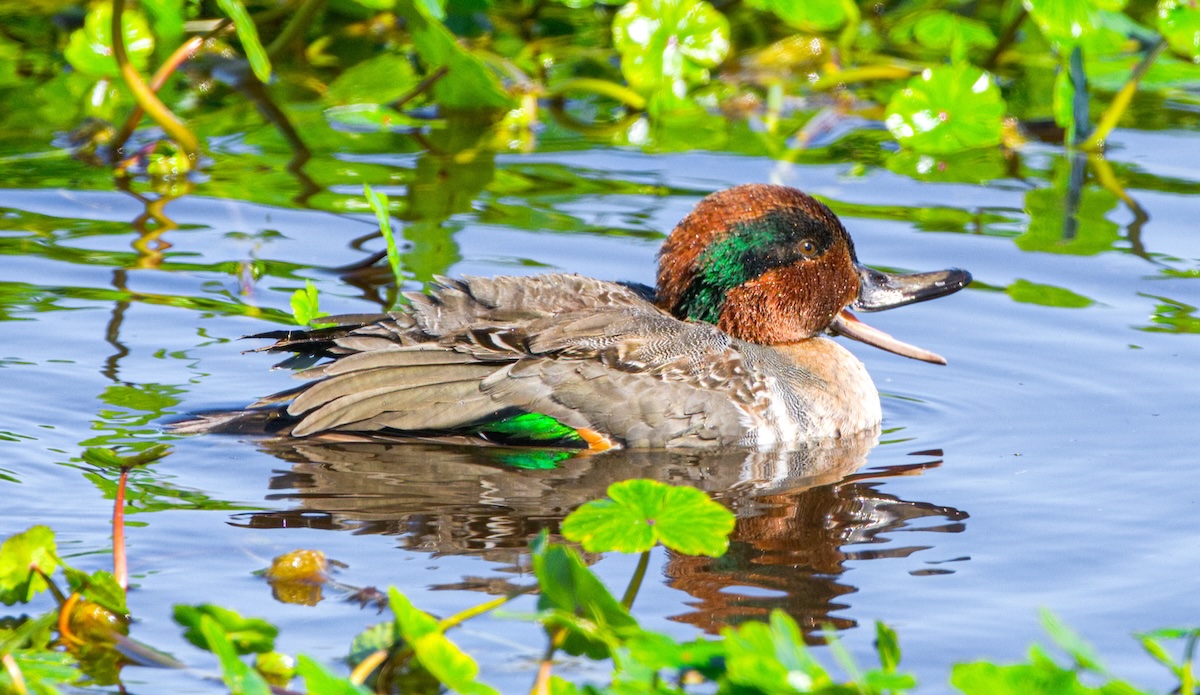
Where You’ll See Them:
Late-season ghosts in the flooded grass. You’ll find them in shallow oxbows, pasture runoff, and those grassy fringes just outside the hardwoods. When the temps drop and the pressure’s up, they slip in quiet, often mixed with blue-wings or working solo.
Call Notes:
High, short “pit-pit” calls. Barely audible some mornings, and they don’t say much unless they’re tight. No need to overwork your call here—just keep still and let ‘em do the talking.
Plumage & ID Tips:
Drakes carry a cinnamon head with a bold green eye-streak. Flashy in hand, subtle on the wing. They’re smaller than blue-wings, with fast, flickering wingbeats. If something zips in low and tight with a sudden juke—it might be a green-wing.
Feeding Behavior:
Quick feeders. Seeds, bugs, and whatever’s floating in that shallow sheet water. If you’re in ankle-deep stuff with soft grass and fresh mud, stay put.
Shooting Zone:
Don’t blink. Green-wings come in hard and change direction mid-flight like they’re dodging something you can’t see. It’s a test of reflexes—swing fast, lead smart.
Marsh & Open Water Birds
These ducks like broader water—coastal flats, river mouths, and flooded impoundments. You’ll catch them when the pressure moves them inland or the weather sets up right.
American Wigeon (Mareca americana)
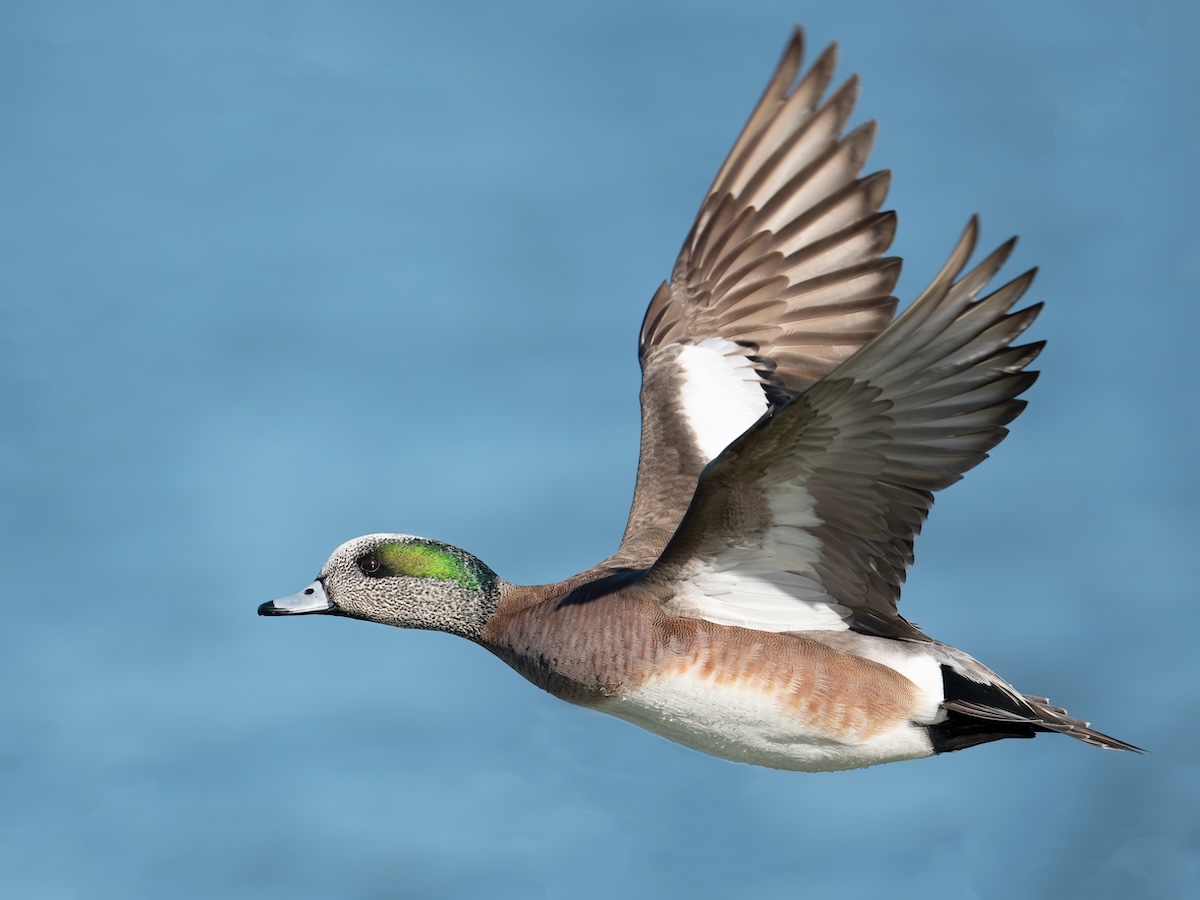
Where You’ll See Them:
Open water marshes near river mouths—Fenholloway, Steinhatchee, places where salt meets fresh. They drift in with gadwall and teal, often feeding like cattle along the edges.
Call Notes:
A soft, whistling “whew-whew” from the drakes. Haunting and high-pitched, like a wheezy harmonica. Don’t try to mimic it unless you’ve practiced—it’s easy to spook them.
Plumage & ID Tips:
Drakes have a pearly forehead and green eye stripe—a “baldpate,” old-timers call it. Hens are gray-brown and neat-looking. In flight, they flash white wing patches.
Feeding Behavior:
Grazer-style. They like submerged grass, tender shoots, and leafy greens. More deliberate than dabblers—if you find them feeding, they’ll stick around.
Shooting Zone:
They don’t scream in like teal or dip like woodies, but they’re slick. Straight-line fliers that drift in smooth and low. If you’re still, they’ll work close.
Northern Shoveler (Spatula clypeata)

Where You’ll See Them:
Potholes, impoundments, and brackish back edges. Shovelers like their space but aren’t afraid of muck. You’ll spot them paddling in circles, heads down, filter-feeding like they’ve got all day.
Call Notes:
Not much to write home about—low, flat “tuck-tuck” from the hen. They’re not big conversationalists.
Plumage & ID Tips:
That oversized bill is the giveaway. Drakes look like they’ve been painted by a kid—green head, white chest, chestnut flanks, and flashy wings. Hens are dusty orange and brown, but that bill still stands out.
Feeding Behavior:
More plow than pick. They sweep side to side, dragging that shovel through shallow water and scooping up whatever they find. If it stirs the water, they’ll eat it.
Shooting Zone:
They don’t fly fancy, but they’re cautious. Shovelers like to circle wide before committing. If they set wings, be ready—they’ll lock up low and come in heavy.
Coastal Oddballs
Tall-legged, tree-roosting, whistle-talking outliers. They don’t always play by duck rules—but they’re showing up more and more in Big Bend marsh country.
Black-Bellied Whistling Duck (Dendrocygna autumnalis)
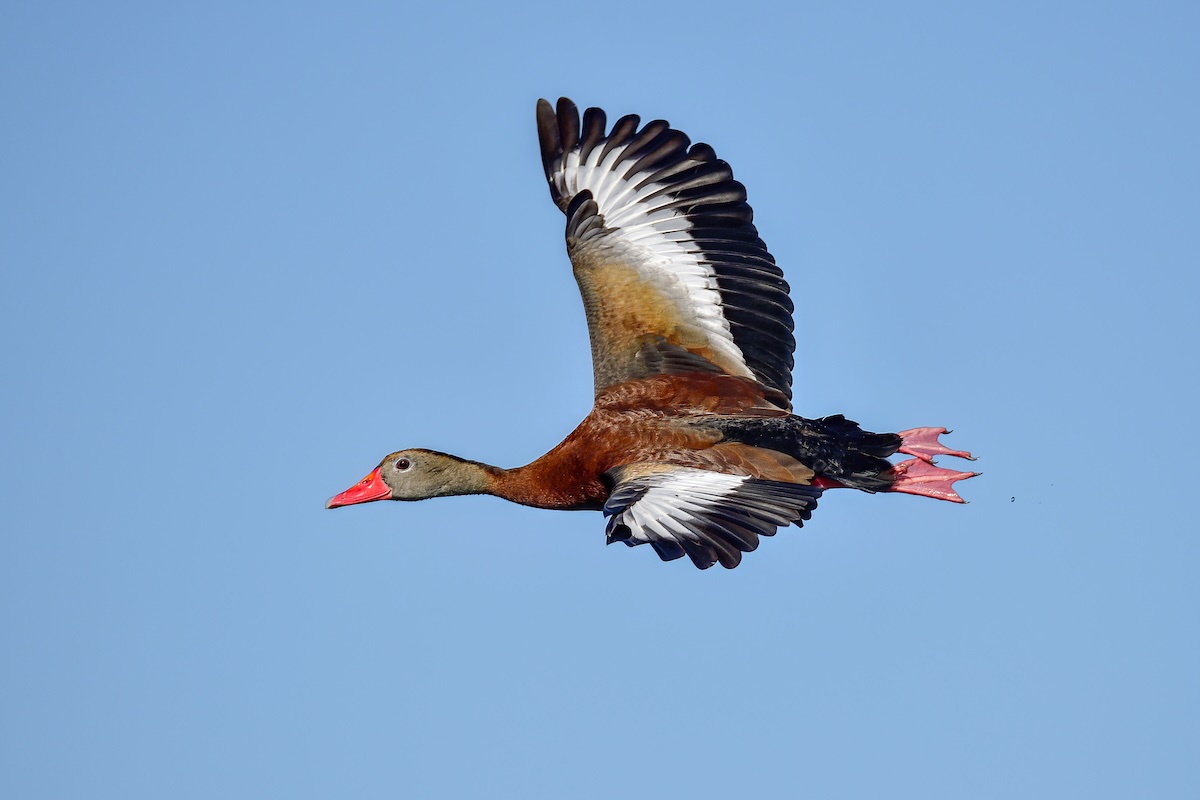
Where You’ll See Them:
Becoming more common in the Big Bend and around the North Florida duck hunting county, especially in flooded cow pastures and swampy impoundments. These oddballs roost in trees and move around at all hours.
Call Notes:
Name says it all—they whistle. Loud, high-pitched wheeeeee-wheeee call in flight. You don’t call these like traditional puddle ducks.
Plumage & ID Tips:
Tall, lanky birds with long pink legs and red bills. Black belly, chestnut body, and big white wing patches in flight.
Feeding Behavior:
Foragers more than dabblers. You’ll see them walking on mudflats or even hanging out in cow pens. Night feeders too—don’t be surprised to catch movement right at legal light.
Shooting Zone:
They don’t dive and twist, but they’re big and deceptive in flight. Their size makes them look slower than they are. Take your time, lead right.
Fulvous Whistling Duck (Dendrocygna bicolor)
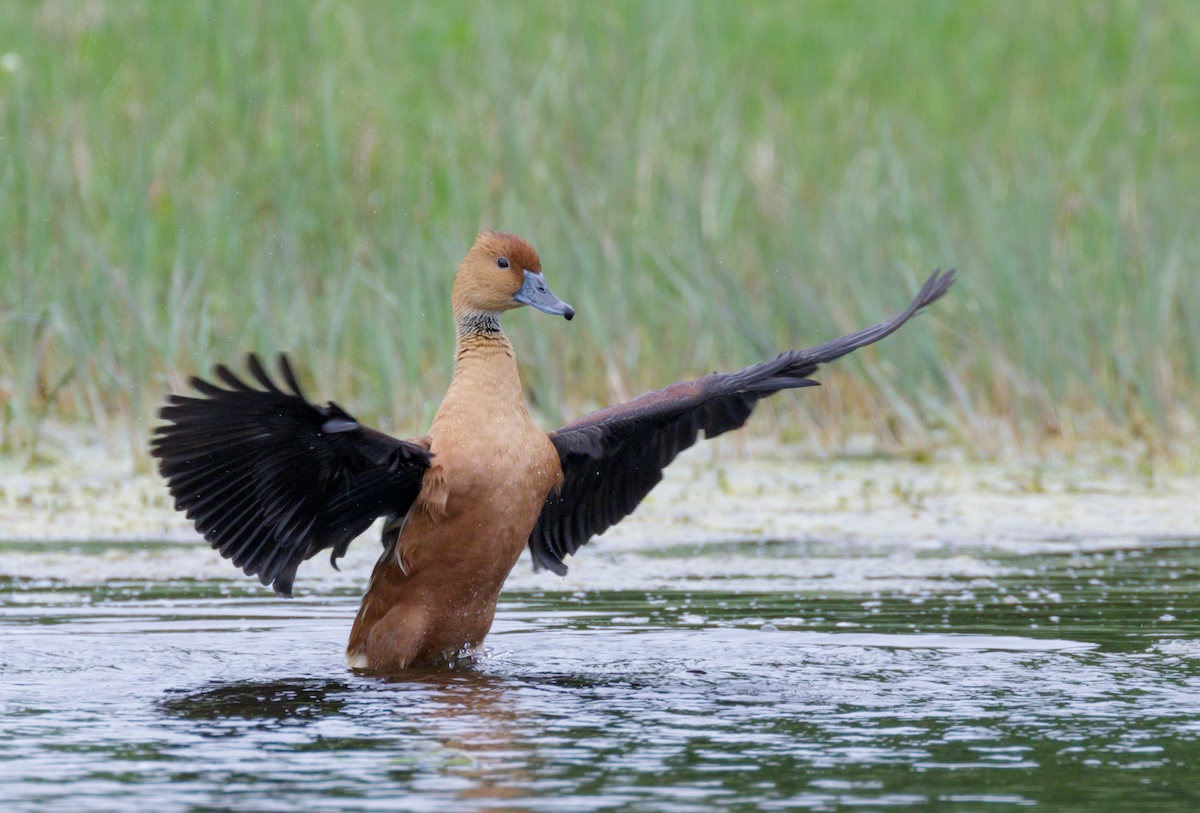
Where You’ll See Them:
A rarer cousin to the black-bellied whistler, but don’t rule them out. You’ll catch a glimpse in old rice impoundments, swampy pastures, or tucked into grassy fringe ponds near the coast. They like quiet corners and don’t mind wading long.
Call Notes:
Softer than black-bellied whistles—peeps and squeaks more than screeches. They’re talkative, just not loud about it.
Plumage & ID Tips:
Golden-cinnamon body, long legs, and a pale face. No black belly. In flight, they’ve got a stretched-out, lanky look—almost goose-like, but without the heft.
Feeding Behavior:
Mostly night feeders, but you’ll see them nosing around the mud mid-morning. Roots, seeds, and aquatic stems are their jam. They’ll tip like dabblers, but they forage more like wading birds.
Shooting Zone:
Slow fliers, but don’t be fooled—they’ll rise fast if you shift too much. Big targets, but easy to miss if you lead too hard. If they’re circling wide, wait ‘til they commit.
Wildcards & Passersby
While duck hunting in the Econfina area, you might bump into ringnecks, hooded mergansers, or even the occasional gadwall when conditions line up. These aren’t your primary targets in Big Bend swamps—but they’re fair game if they’re working your spread.
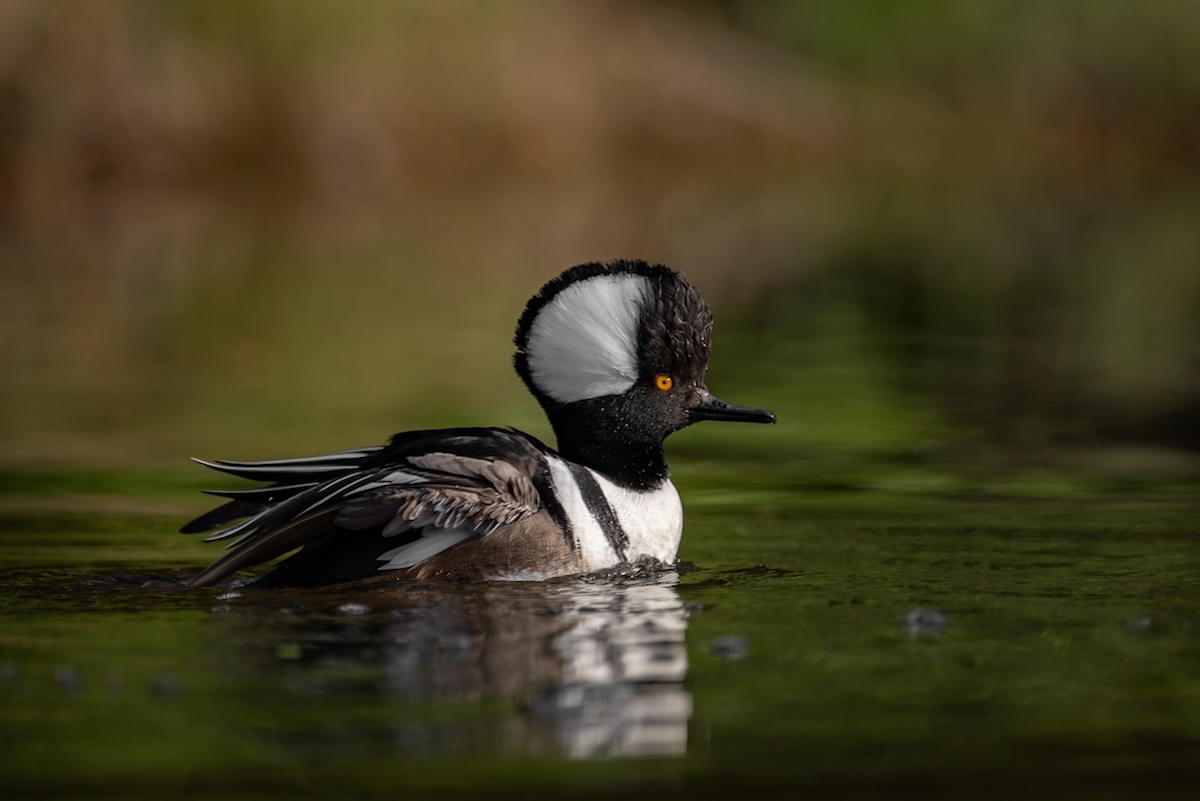
Now and then, when you’ve been sitting quiet in the flooded hardwoods, wind whispering through the overstory and your decoys barely rippling, something unexpected ghosts in low. Maybe it cuts wide, maybe it circles twice before deciding your little pocket looks good enough. And just like that, you’ve got something in the spread you weren’t quite planning on—something that’s not a woodie or a mallard but still deserves a warm barrel.
- Take ringnecks. You’ll see them more often in the bigger ponds and open water pockets, but they’ll swing through the sloughs if you’re near the Econfina or tucked into one of those deeper oxbows that form along the bendy backroads of the Aucilla. They’re quick, darting birds, slick black heads on the drakes and that tight, compact flight that’ll test your aim if you’re used to more predictable puddle ducks.
- There’s the hooded merganser, the black-and-white mohawk patrol (seen above). They’re sharp dressers, but don’t expect them to work decoys like mallards. Hoods are a little odd, a little elusive—fish-eaters by trade, and fast as lightning on the wing. You’re more likely to cross paths with them in quiet creeks and swamp edges where the water runs clear and shallow. Think up around Econfina headwaters, where the springs run cold and the cypress hangs heavy. They’ve got that natural mystery about ‘em—something primal. You’ll spot a drake’s hood flare wide just before he banks off, and even if you don’t pull the trigger, it’s one of those moments that sticks with you.
- Every so often, especially in a good cold year, you’ll catch a stray gadwall slipping into the marsh. Down around Steinhatchee or over near the mouth of the Fenholloway, they’ll loaf with other puddle ducks and graze in the shallows like cattle. They’re not flashy like mallards, but they’re clean birds—gray, tidy, deliberate. If they come in, treat ‘em right. Gadwall won’t blow the top off a call, but they’ve got a steady presence and are a solid addition to the strap.
While they’re not exactly rare, these birds don’t always show up with consistency, either. They’re the wildcards. The “that ain’t what I expected” birds. So maybe they got pushed around by weather, maybe the moon was right and they decided to feed inland for a day. Doesn’t matter. If they’re cupping in with intent, and you’ve got a clean shot, there’s no reason to pass.
That’s part of the draw of the Big Bend’s backwater swamps—especially when you’re hunting anywhere near the Econfina River Basin, or those hidden corridors just north of Steinhatchee. The waters here don’t follow straight lines, and neither do the birds. You’ll get early-morning woodies and the occasional mallard sure enough, but mixed in might be a lone diver lost from his raft or a pair of gadwall scouting new feed.
Final Thoughts From the Timber
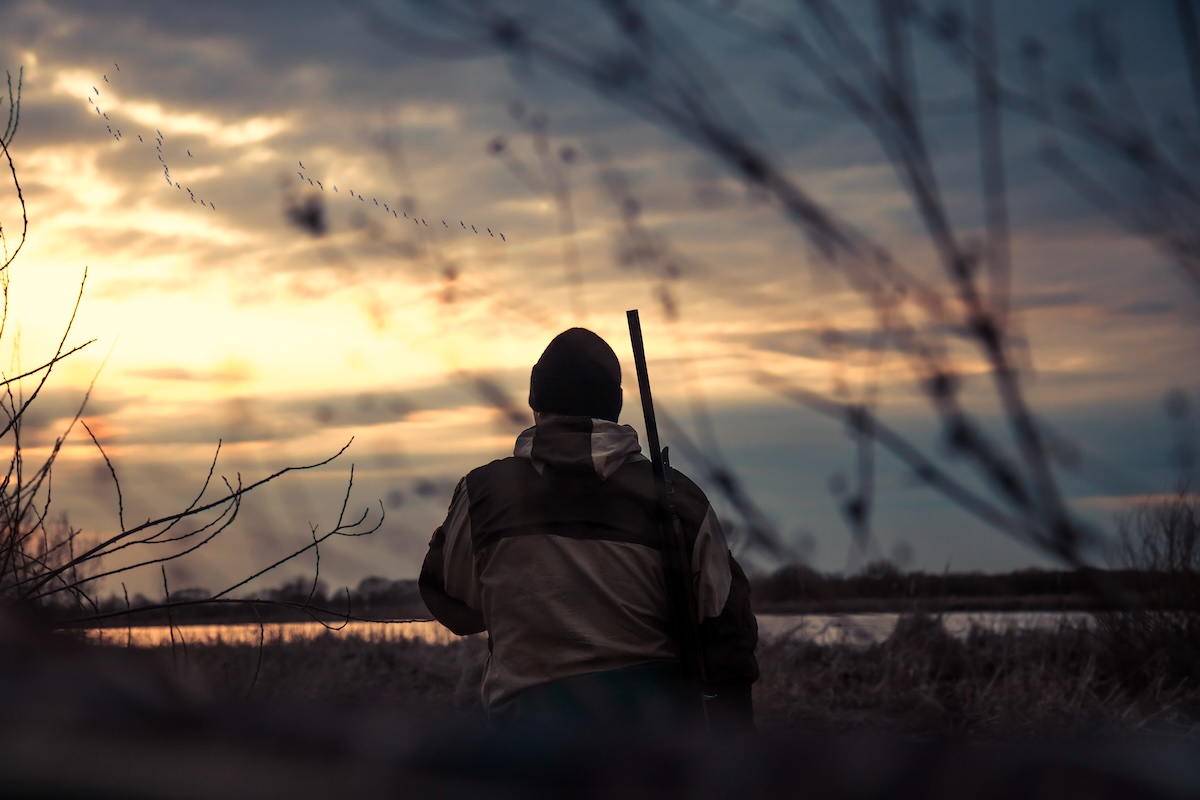
There’s a certain kind of man who hunts ducks in the flooded timber and bottomland swamps of Florida—and if you find yourself at Econfina Sporting Club, you’re probably that kind of man. You’re not here for show. You’re here for the snap of wings cutting through cold morning air, for the way the light hits the water just right as a wood duck drops in low through the trees.
You’re here because this place—these swamps, these creeks—feels like the kind of ground where things still matter.
At Econfina, the hunt starts before the sun rises and doesn’t end when the straps are full. It’s in the slow paddle down a blackwater slough, the way your boots sink into the muck at the base of a cypress, the hush that settles in right before a drake tips his wings. You’re not out here just to shoot—you’re out here to match wits with something wild on its home turf.
We’ll see you out there—mud on your boots, steam off your coffee, and a wood duck cutting low through the cypress at first light. Because if you know the Econfina River, you know the birds don’t just fly different—the whole place just feels right.

